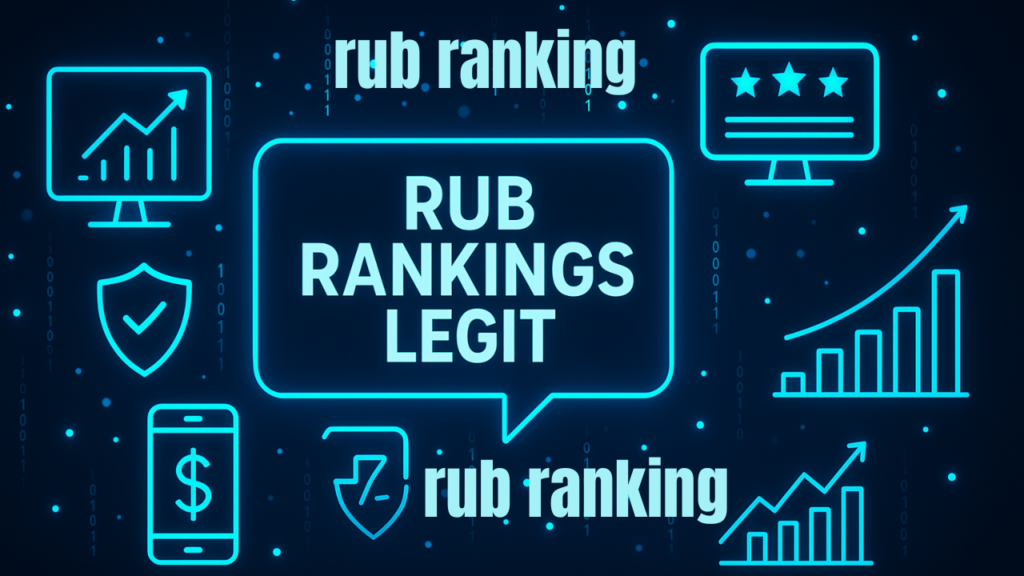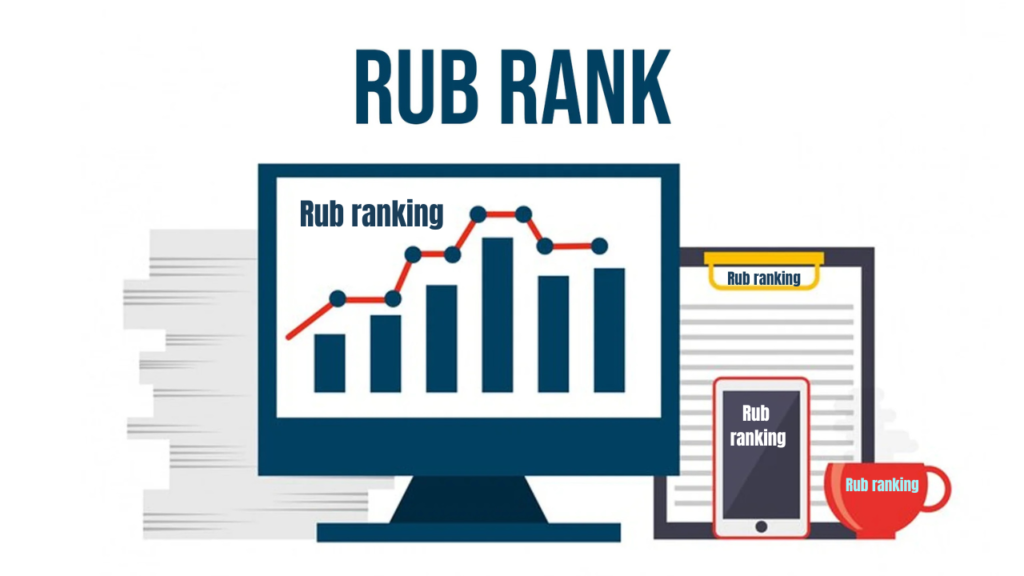In today’s data-driven world, ranking systems play a vital role in evaluating performance, making decisions, and establishing credibility. Among these systems, “rub ranking” has emerged as a specialized and nuanced method of assessment that finds its relevance in various domains. From esports and gaming leaderboards to educational evaluations and digital content platforms, rub ranking has become an integral part of how achievements and competencies are measured.
Understanding the principles behind rub ranking is crucial not only for those directly involved in such systems but also for anyone seeking to gain a competitive edge or fair assessment. Whether you’re a gamer climbing competitive ladders, a student aiming for academic excellence, or a content creator trying to crack platform algorithms, the rub ranking framework offers insightful pathways to success.
This article will delve deep into the concept of rub ranking, exploring its definition, functionality, benefits, limitations, and real-world applications. By the end, readers will have a clear understanding of how rub ranking works, why it matters, and how it shapes performance metrics in diverse environments.
What Is Rub Ranking?
Definition and Origin

Rub ranking is a structured evaluation system designed to rank individuals, teams, or outputs based on a detailed rubric or set of pre-established criteria. The term “rub” stems from “rubric,” which refers to a scoring guide used to evaluate performance in a consistent and objective manner. Unlike traditional point systems, rub rankings focus on qualitative and quantitative benchmarks that align with defined performance standards.
Historically, rubrics were widely used in educational settings to assess essays, projects, and other non-standardized assessments. Over time, this system evolved into a more comprehensive framework applicable to various industries, including gaming, corporate performance reviews, and social content platforms. Rub ranking now serves as a flexible tool that accommodates complexity, fairness, and adaptability in performance evaluation.
Common Use Cases
Rub ranking is not confined to any single sector. In esports and competitive gaming, rub rankings help determine player or team standings based on in-game metrics such as kills, assists, objectives, and win-loss ratios. This system ensures a more holistic evaluation beyond just win counts.
In academia, rubrics are used to evaluate essays, presentations, and research based on multiple criteria such as originality, coherence, and grammar. When translated into a ranking system, these rubrics provide students and educators with clearer performance insights. Similarly, in digital content platforms like YouTube or Reddit, rub ranking systems influence visibility by factoring in user engagement, relevance, and content quality. These systems often operate behind the scenes, affecting what content users see first.
How Rub Ranking Systems Work
Criteria and Variables
A key feature of rub ranking systems is the use of well-defined criteria. These criteria are not arbitrary; they are grounded in the core objectives of the activity or domain. For instance, in academic writing, evaluation may be based on structure, clarity, depth of research, and grammar. Each criterion is assigned a weight, reflecting its relative importance in the overall assessment.
Variables can be both objective (e.g., number of citations) and subjective (e.g., creativity). This combination allows rub rankings to capture a more complete picture of performance. Weighting ensures that more critical elements have a greater influence on the final ranking. This layered approach encourages participants to excel across multiple dimensions, promoting a well-rounded skill set.
Ranking Algorithm Mechanics
The process begins with scoring each criterion based on a rubric. These individual scores are then aggregated using weighted formulas to produce a final score. The ranking algorithm may include normalization techniques to ensure fairness across different evaluators or time periods. In digital platforms, real-time data processing allows for dynamic updates to rankings based on user behavior or performance metrics.
Some rub ranking systems also incorporate penalties for rule violations or inactivity, adding another layer of integrity to the system. The final ranks are typically displayed on dashboards or leaderboards, providing transparency and motivation for continuous improvement. Understanding how the backend mechanics work empowers users to tailor their strategies effectively.
Benefits and Limitations of Rub Ranking
Advantages

One of the most compelling benefits of rub ranking is its ability to offer a nuanced and comprehensive evaluation. Unlike binary win-loss systems, rub rankings reward consistency, effort, and skill across various dimensions. This leads to more accurate and meaningful results.
Moreover, rub rankings can be customized to fit specific needs. Whether it’s for grading students, evaluating employee performance, or ranking gaming achievements, the system’s flexibility makes it highly adaptable. Transparency is another key advantage. Because rubrics are pre-defined and shared, participants understand exactly what is expected and how they are being evaluated.
Challenges and Criticisms
Despite its many benefits, rub ranking is not without its flaws. One major criticism is the potential for subjectivity, especially in qualitative assessments. Different evaluators might interpret the same criterion differently, leading to inconsistent results.
Another issue is complexity. Designing an effective rubric and ensuring consistent application can be resource-intensive. Additionally, rub ranking systems can sometimes demotivate lower-ranked individuals who feel the criteria are too rigid or unachievable. Addressing these concerns requires careful design, ongoing calibration, and possibly the integration of AI to standardize evaluations.
Real-World Examples of Rub Ranking in Action
Esports and Competitive Gaming
In the world of esports, rub ranking systems have revolutionized how players and teams are evaluated. Rather than relying solely on win-loss records, these systems incorporate multiple performance metrics such as kill/death ratios, objective completions, and teamwork efficiency. This allows for a more comprehensive assessment that aligns closely with in-game realities.
Games like League of Legends and Dota 2 use rub-style systems in their matchmaking algorithms to ensure fair play. These systems analyze past performance across multiple dimensions, offering players a rank that accurately reflects their skills and contributions. This also helps organizers seed tournaments more fairly, enhancing the competitive experience.
Education and Academia
Educational institutions have long relied on rubrics to assess student performance. When converted into a ranking system, these rubrics provide a transparent and multi-faceted view of academic achievement. For instance, universities may use rub ranking to determine scholarship eligibility, dean’s list qualifications, or class standings.
The advantage of this approach lies in its ability to assess more than just test scores. By incorporating elements like class participation, project quality, and research depth, rub ranking promotes a holistic view of student development. This aligns better with modern educational goals that emphasize critical thinking and creativity.
Conclusion
Rub ranking represents a powerful and versatile tool in the modern evaluation landscape. Its structured yet flexible approach allows for comprehensive, fair, and actionable assessments across a variety of fields. Whether used in competitive gaming, educational settings, or digital platforms, rub ranking empowers users with clarity and control over performance metrics.
As data becomes increasingly central to decision-making, the importance of nuanced evaluation systems like rub ranking will only grow. Embracing and understanding these systems is essential for anyone looking to succeed in competitive or performance-based environments. With ongoing advancements in technology and data science, rub ranking is poised to become even more accurate, transparent, and impactful in the years ahead.
FAQs
What is the main purpose of rub ranking?
The main purpose of rub ranking is to evaluate and rank performance based on a detailed rubric that combines qualitative and quantitative criteria for a more comprehensive assessment.
How is rub ranking different from traditional rankings?
Unlike traditional rankings that often rely on single metrics like scores or win-loss records, rub ranking incorporates multiple weighted criteria for a holistic evaluation.
Can rub rankings be manipulated or gamed?
While any system has vulnerabilities, rub ranking’s structured and transparent criteria make it harder to game than less nuanced systems, especially when regular audits or AI standardization are used.
What industries use rub rankings most effectively?
Rub rankings are widely used in education, esports, corporate performance evaluations, and digital content platforms like YouTube and Reddit.
Are rub ranking systems fair and transparent?
When well-designed, rub ranking systems offer high levels of fairness and transparency. However, they require careful implementation and regular updates to maintain credibility.
You May Also Read: https://topbuzusa.com/betechit-com-contact/





